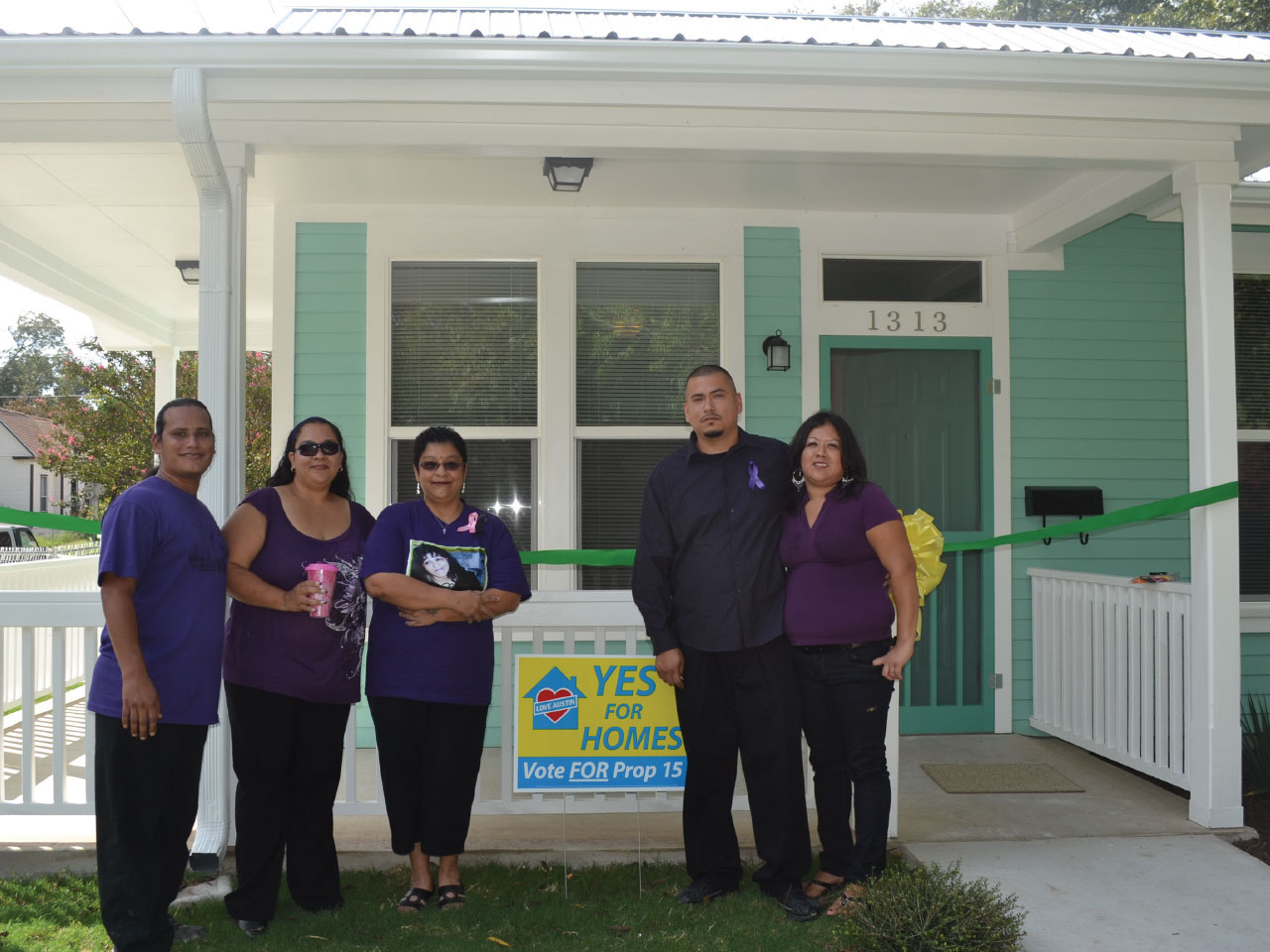Austin, Texas – A Case Study of Early Intervention and Evolving Strategies to Create Affordable Housing for Vulnerable Residents with Historical Ties to the Neighborhood
Overview
The Guadalupe neighborhood is located just east of Austin’s Central Business District, bounded by Interstate Highway 35. The neighborhood, which comprises less than one-fifth a square mile and approximately 14 blocks, was historically a community of color, with a predominantly Mexican-American population. Through the 1970s and 1980s, the area suffered from rapid deterioration, population loss, and large-scale redevelopment pressures. At that time, of the area’s 170 single-family homes, over half were in substandard condition.
In 1979, Austin leaders made plans to expand the French Legation in the neighborhood, which would have displaced at least 11 families. Residents rallied to block the expansion and successfully lobbied the city council to redirect federal block grant funds to support a new community-generated development plan for Guadalupe. To implement the plan, neighborhood leaders formed the Guadalupe Neighborhood Development Corporation (GNDC), which has become a pioneer in its diverse deployment of community-driven strategies over the past 35-plus years to mitigate the displacement of vulnerable residents.
Today, even though Guadalupe is now in the dynamic stage of gentrification, with a growing share of million-dollar homes, neighborhood leaders have successfully preserved the residential character of the neighborhood while creating a legacy of affordable housing that is under long-term community control for low-income residents with ties to the area.
Key Strategies & Tools
- Community development corporation.
The Guadalupe Neighborhood Development Corporation, created and governed by leaders from the neighborhood, has been integral to the success of the neighborhood’s displacement mitigation programs. - Early and strategic land acquisition.
In GNDC’s early years, the organization purchased vacant properties in strategic locations on as many blocks as possible–for long-term control and to bar assembly for commercial redevelopment. GNDC became a large property owner in the area providing additional clout in zoning battles. Buying lots early was also smart from an affordability perspective: In the 1980s, the average lot price was $5,000; today full lots sell for $500,000 to $650,000. - Preference policy.
Low-income residents and former residents with historical ties to the two zip codes served by GNDC receive priority placement on GNDC’s long waiting list for affordable rental and homeownership opportunities. - Community land trust.
GNDC created the first community land trust in Texas to provide for homeownership that is permanently affordable. GNDC maintains ownership of the land, while the family obtains a mortgage to purchase the home. A fixed rate of appreciation ensures that CLT homes can be resold at affordable prices, while allowing owners to recoup their investment and build additional equity. - Property tax breaks for permanently affordable properties.
GNDC has led efforts at the Texas Legislature and the local appraisal district to reduce property taxes on community land trust and other income-restricted homes–ensuring that these homes remain affordable for the low-income families renting or purchasing them. - Creative utilization of infill properties.
Since purchasing lots is no longer feasible in Guadalupe, GNDC has become an innovator in Austin in developing affordable accessory dwelling units on lots that can support a second unit.
Challenges
Guadalupe neighborhood’s initial challenges in mitigating displacement of vulnerable residents included large-scale zoning changes that precipitated the loss of homes in the neighborhood. GNDC and neighborhood association leaders had deep-seated disagreements with African-American leaders in the area over the commercialization of the neighborhood, and the groups worked largely in silos. More recently, high land values have made new lot acquisition for affordable housing infeasible within the neighborhood.
Outcomes as of 2018
- 91 long-term affordable units under community control in Guadalupe through two community development corporations, including 26 units underway (out of 170 total homes in the neighborhood in 1980, when GNDC’s displacement-mitigation work began)
- Average rent of GNDC units: $583; average income of GNDC renters: $28,700
- 8 affordable homeownership units, including the first CLT home in Texas
Takeaways
1. Develop and implement a community-driven, neighborhood-level strategy for mitigating displacement of vulnerable residents. Efforts to mitigate displacement in Guadalupe have continually been anchored in the community, beginning with a community-generated plan and a community development corporation governed by widely-respected neighborhood leaders with social and political capital.
2. Intervene early to acquire permanent control of land. Acquire as much land as possible early on; as gentrification picks up steam in a neighborhood it becomes much more difficult to feasibly acquire properties for affordable housing.
3. For homeownership units, restrict resale price using a shared equity model to ensure permanent affordability of the units for future generations of residents. GNDC’s earlier homes were sold without caps on the resale price, and several have since been resold at market prices beyond the means of other low-income families.
4. Invest in capacity building and technical assistance. Funding for program administration and early technical assistance have been key to GNDC’s displacement mitigation work. GNDC’s early investment in rental housing with little or no debt has generated a critical stream of income to help fund the organization’s administrative operations, allowing the organization to expand its capacity and impact over time.
5. Adapt strategies to changing conditions in the neighborhood. The strategies utilized in Guadalupe to address gentrification have evolved over time, in response to neighborhood changes, newly available tools, and lessons learned from prior work.
